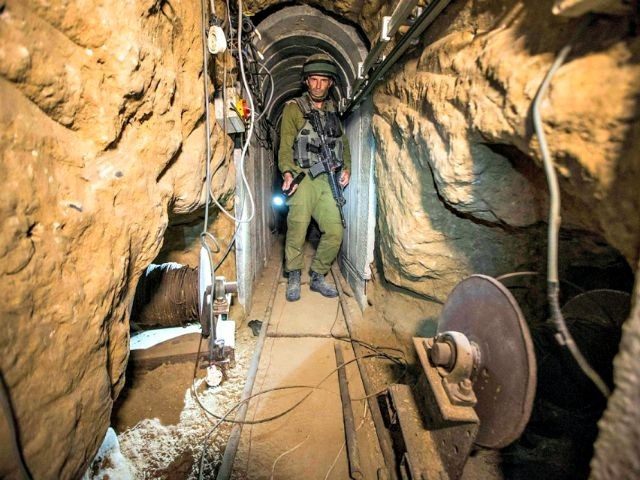Israel’s Defense Ministry confirmed that it is cooperating with the U.S. to develop a system for detecting tunnels, hailed as an underground equivalent of the Iron Dome missile defense system.
The Financial Times reported that the U.S. has earmarked $120 million over the next three years for the system, whose aim is to expose terror tunnels built by Hamas in Gaza as well as tunnels dug in Israel’s north by Hezbollah.
The U.S. is partnering with Israeli companies Elbit Systems and Rafael Advanced Defense Systems, which developed the Iron Dome missile-defense system, and will use the same technology against tunnels used to smuggle illegal immigrants or drugs across the Mexican border.
Between 50-100 smaller companies are also involved in developing the detection technology, according to an Israeli source.
“We do whatever we can to find a technological solution,” Major General Nitsan Alon, head of the Israel Defense Forces’ operations directorate, said at a briefing on Wednesday.
He declined to disclose sensitive details about the technology, saying it would “help Hamas.”
However, Alon said Hamas is “not ready for another fight against Israel.”
The Financial Times said that the technology will likely be based on underground sensors that gather information about the tunnels that will subsequently be interpreted by algorithms. According to experts, the difficulty lies in finding tunnels that have already been built, since those in mid-construction are easier to unearth because of the digging process’ vibrations and sounds.
“The biggest problem is detecting a tunnel when it is already ready, and it is just a hole in the ground,” said Yiftah Shapir, an analyst at Israel’s Institute for National Security Studies, adding that geophones – sensors used in the oil industry – and controlled explosions may be used for detecting older tunnels.

COMMENTS
Please let us know if you're having issues with commenting.